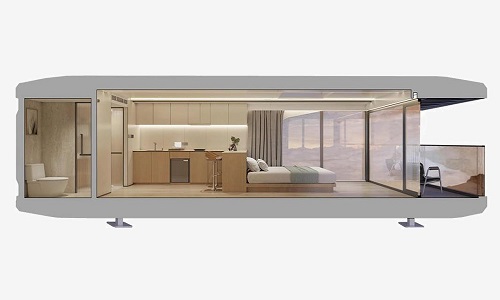The housing market has seen a significant evolution over the past few decades, with homeowners and builders increasingly seeking faster, more efficient, and cost-effective ways to construct quality homes. One solution that has gained popularity is modular homes.
What Are Modular Homes?
Modular homes are prefabricated structures built in sections (modules) in a factory setting and then transported to the construction site for assembly. Unlike traditional homes that are built entirely on-site, modular homes are produced under controlled factory conditions, allowing for a high level of quality control and precision.
Each module is designed to meet local building codes and standards, and once on-site, the sections are joined together on a permanent foundation. Modular homes differ from mobile or manufactured homes in that they are permanently affixed to land and meet the same building codes as site-built houses.
How Modular Homes Are Built
The construction of modular homes involves several stages:
- Design and Planning: Homeowners work with architects or modular home manufacturers to design a home that fits their needs. This includes layout, room sizes, exterior finishes, and interior options.
- Factory Fabrication: Modules are built in a factory environment. Walls, flooring, electrical systems, plumbing, and insulation are pre-installed. Factory production ensures minimal exposure to weather delays and defects.
- Transportation: Completed modules are transported via truck to the building site. Depending on the size and complexity, transportation may involve one or several trips.
- On-Site Assembly: The modules are lifted into place using cranes and joined together on a pre-prepared foundation. Utilities such as water, electricity, and sewage are connected, and final inspections ensure everything meets building codes.
- Finishing Touches: Exterior siding, roofing, landscaping, and interior finishes are completed. At this point, the home is ready for occupancy.
Advantages of Modular Homes
Modular homes offer several compelling benefits over traditional site-built homes:
- Speed of Construction: Building in a controlled environment significantly reduces construction time. Many modular homes can be completed in a fraction of the time it takes to build a conventional home.
- Cost-Effectiveness: Factory production reduces labor costs and material waste, often making modular homes more affordable without compromising quality.
- Quality Control: Building indoors allows for precise construction and thorough inspections at every stage, reducing the risk of defects.
- Energy Efficiency: Modular homes can incorporate advanced insulation, energy-efficient windows, and HVAC systems, making them more sustainable and cheaper to operate.
- Design Flexibility: Modular homes can be customized to a homeowner’s specifications, including multiple stories, floor plans, and high-end finishes.
- Sustainability: Factory construction produces less waste and allows for more efficient use of materials. Some manufacturers also use eco-friendly materials and energy-efficient designs.
Disadvantages of Modular Homes
While modular homes have many advantages, there are also challenges to consider:
- Transportation Limitations: Modules must be transported from the factory to the site, which can limit the size and design of the home.
- Land Preparation Required: Unlike mobile homes, modular homes require a permanent foundation, which can add to upfront costs.
- Financing and Resale: While financing options are similar to traditional homes, some lenders are unfamiliar with modular construction, which can complicate the mortgage process. Resale value may also vary depending on location and market perception.
- Customization Constraints: Although flexible, there are design limits based on the modular building process. Highly complex or unusual designs may be more difficult or costly to implement.
Design Options and Customization
Contrary to some misconceptions, modular homes are highly customizable.
Homeowners can choose:
- Single-story or multi-story designs
- Modern, traditional, or contemporary aesthetics
- High-end finishes such as hardwood flooring, stone countertops, and custom cabinetry
- Energy-efficient features like solar panels and geothermal heating
- Open floor plans or compartmentalized layouts
Sustainability and Environmental Impact
Modular homes are often more environmentally friendly than traditional homes because:
- Factory construction minimizes material waste.
- Energy-efficient designs reduce long-term energy consumption.
- Sustainable materials can be integrated during construction.
- Reduced construction time decreases environmental disruption at the building site.
The Future of Modular Homes
The modular home industry is expected to continue growing as technology improves and demand for affordable housing rises. Innovations such as 3D printing, smart home integration, and modular high-rise buildings are pushing the boundaries of what modular construction can achieve.
With increasing attention on cost, speed, and sustainability, modular homes may soon become a mainstream alternative to traditional site-built homes.

